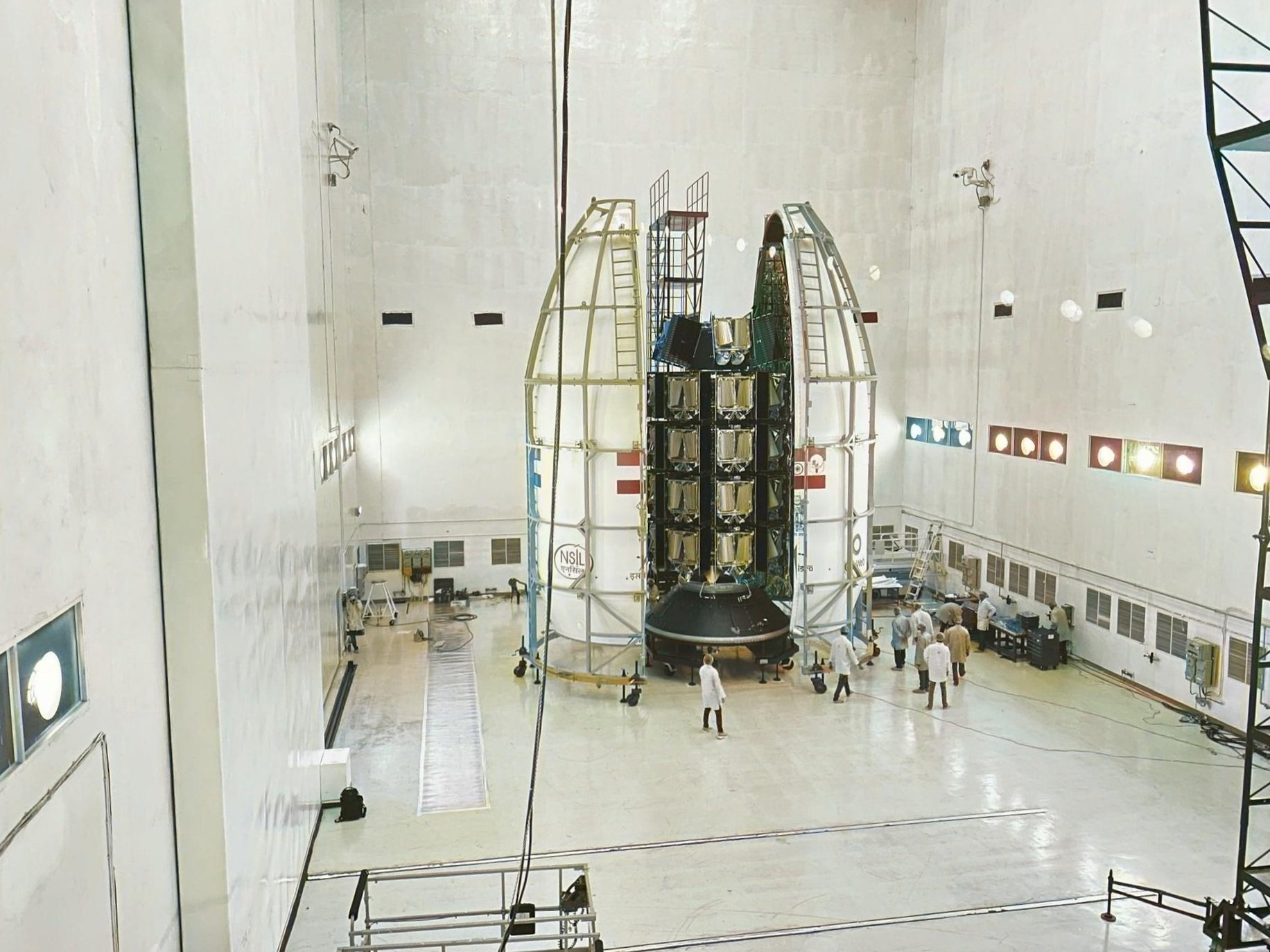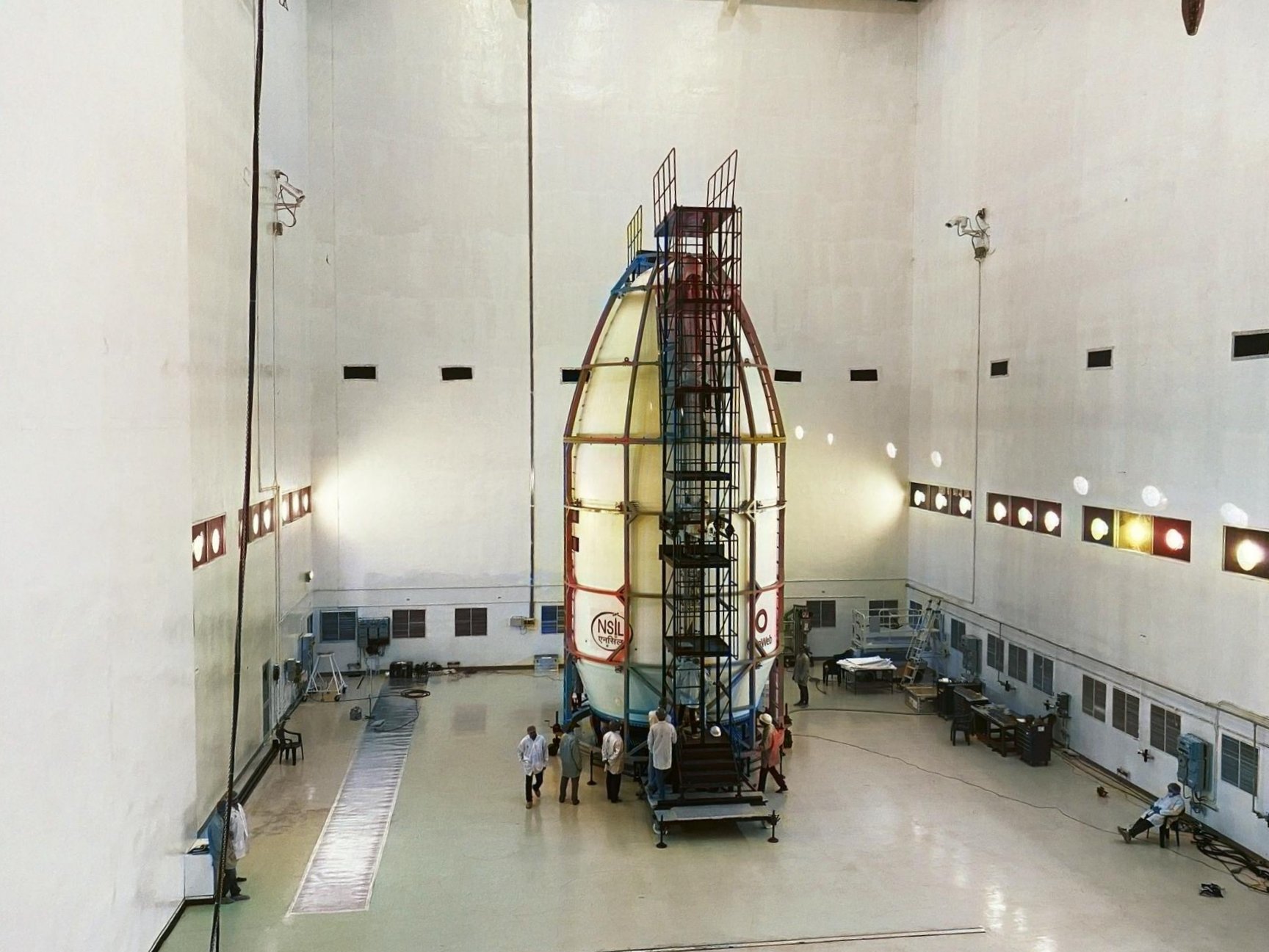Latest Thread
- UK Is there any British officer or British military personnel here that I can discuss with?
- Article Requirements for the Command and Control of the UK's Ground-Based Air Defence
- NATO Missile Defense Radar(Türkiye)
- Ukraine Construction of a defense line by the Ukrainian army
- MBDA to double the range of Aster 15 surface-to-air missiles with Aster 15 EC upgrade
You are using an out of date browser. It may not display this or other websites correctly.
You should upgrade or use an alternative browser.
You should upgrade or use an alternative browser.
fire starter
Well-known member
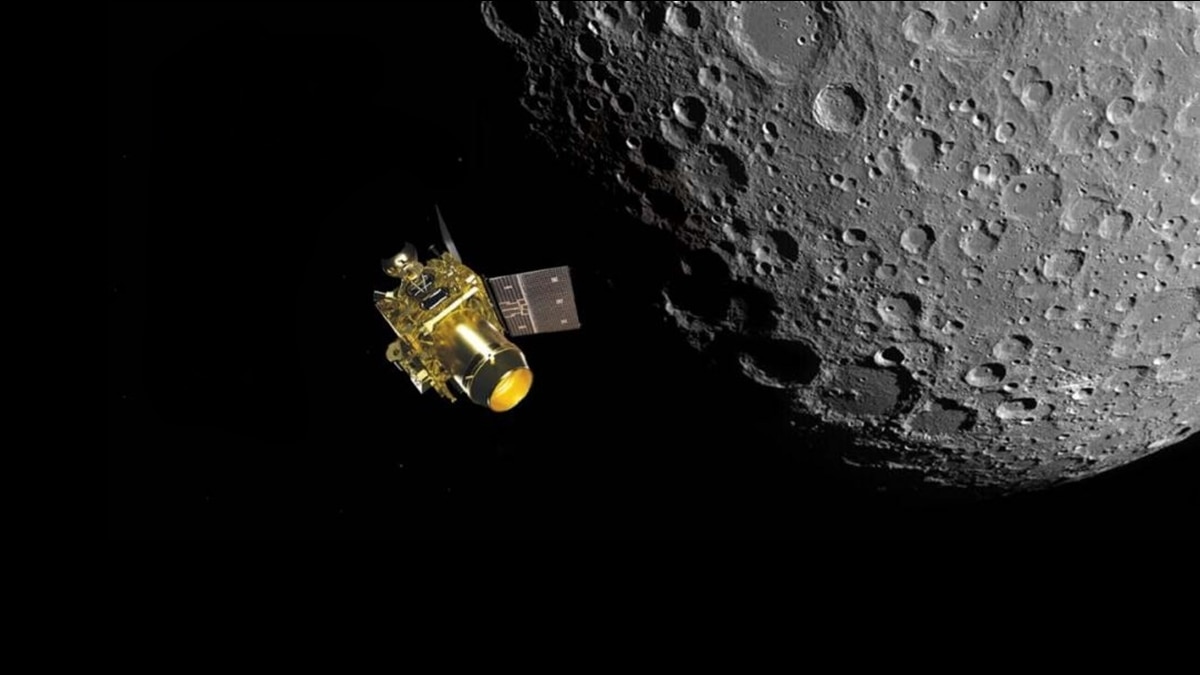
Amid heartbreak with SSLV, Chandrayaan-2 quietly delivers good news
Chandrayaan-2 has been hovering around the Moon since 2019 and is observing the surface for key discoveries.
fire starter
Well-known member
The Ooty Radio Telescope has been designed and fabricated with domestic Indian technological resources. The ORT was completed in 1970 and continues to be one of the most sensitive radio telescopes in the world. Observations made using this telescope have led to important discoveries and to explain various phenomena occurring in the Solar System and in other celestial bodies.
fire starter
Well-known member
ISRO working on reconfigurable communication satellites with adjustable coverage, bandwidth and frequency in orbit based on demand
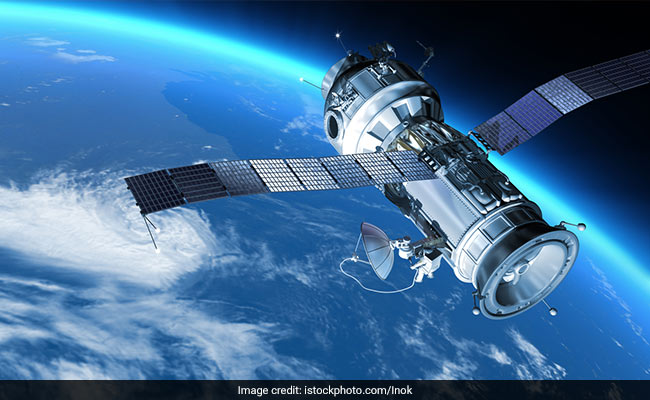
ISRO Is Developing 'Intelligent' Satellites, Says Chairman S Somnath
ISRO is developing "intelligent" geostationary communication satellites that can be re-configured by changing frequencies and bandwidth as per the demand profile from customers, a top official said today.
fire starter
Well-known member
fire starter
Well-known member

India’s Mars Orbiter Mission ends after 8 long years
ISRO has lost communications with the Mars Orbiter Mission, fuelling speculations about the end of its life
 www.opindia.com
www.opindia.com
Launched in 2013, India’s maiden mars mission Mangalyaan, or the Mars Orbiter Mission, has finally come to end. The orbiter entered Mars orbit in September 2014 and was designed to last six months. Exceeding the expected lifespan by several times, the orbiter reportedly has run out of fuel and battery power, and ISRO is expected to make an official announcement of the end of the mission soon.
Ground control has lost communications with the spacecraft, fuelling speculations about the end of its life. While the Indian Space Research Organisation (ISRO) is still trying to figure out whether it has run out of power or it is a communication problem caused by the change of direction of the antenna, multiple sources have said it would not be possible to recover the orbiter and re-establish communication.
The orbiter went into a long eclipse, and after that, there was no communication from it. The satellite had gone into eclipse earlier also and performed automatic manoeuvres to come out of eclipse and re-establish communications. But if there is no fuel left, it would not be able to perform those automated movements. It is also possible that the antenna is pointing somewhere else while changing its direction to try to re-establish communication with earth after the eclipse as per pre-installed software.
According to reports, sources in the Indian Space Research Organisation (ISRO) have said that there is no propellant left in the orbiter. Its batteries have also drained out as the solar panels could not charge them due to prolonged eclipses.
“Recently there were back-to-back eclipses including one that lasted seven-and-half hours. As the satellite battery is designed to handle an eclipse duration of only about one hour and 40 minutes, a longer eclipse would drain the battery beyond the safe limit,” according to the unnamed source.
Earlier the satellite came out of eclipse phases on its own as per autonomous processes without any intervention from the earth.
The Mangalyaan was launched in a Polar Satellite Launch Vehicle (PSLV) on 5 November 2013 and reached Marsh on 24 September 2014. It was ISRO’s first interplanetary mission. At a budget of Rs 450 crore ($74 million), it is one of the most cost-effective space missions. Elaborating on how low-cost the mission was, PM Modi in June 2014 said that the cost of India’s Mars mission was less than Hollywood movie Gravity based on a space mission. The movie had come out in 2013 and its budget was around $100 million.
The Mars mission was designed to last just six months, and the probe has sent a huge volume of data from the red planet in these eight years. The spacecraft carries five scientific instruments, Mars Color Camera (MCC), Thermal Infrared Imaging Spectrometer (TIS), Methane Sensor for Mars (MSM), Mars Exospheric Neutral Composition Analyser (MENCA) and Lyman Alpha Photometer (LAP).
The mission objectives included exploration of the planet, study of Martian atmosphere especially to find the presence of methane and CO₂, and studying the dynamics of the atmosphere. The orbiter has sent photos of Mars and its satellites among other data.
ISRO is planning a Mars Orbiter Mission 2 or Mangalyaan-2 mission, but it is still on the drawing board, and it will be taken up after the Chandrayaan-3 mission.
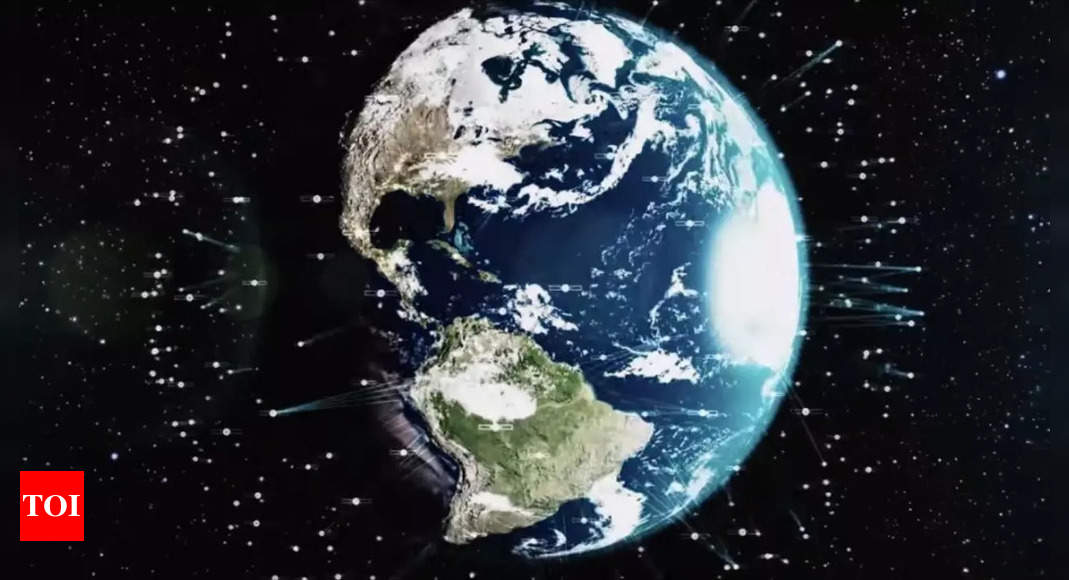
India’s heaviest rocket to make maiden global foray this month, launch to have several firsts | India News - Times of India
India News: Making its maiden foray into the global satellite launch market, Isro’s heaviest rocket GSLVMK III will launch 36 satellites of London-headquartered g
NEW DELHI: Making its maiden foray into the global satellite launch market, Isro’s heaviest rocket GSLVMK III will launch 36 satellites of London-headquartered global communication company OneWeb in the second half of this month that will help the Bharti Airtel-backed company move towards completion of its constellation of satellites for providing high-speed satellite-based internet across the world.
With this ‘LVM3 M2/OneWeb India-1 Mission’, the first LVM3 dedicated commercial launch on demand through (Isro’s commercial arm) New Space India Ltd (NSIL), LVM3 enters the global commercial launch service market, the Indian space agency said on Thursday. The global satcom company recently snapped its ties with the Russian space company for satellite launches due to the Ukraine war and decided to use the services of Isro for launching its broadband satellites. The company had in March suspended all launches from Russia’s Baikonur cosmodrome in Kazakhstan in protest against the Russian-Ukraine conflict.
As per some reports, the GSLVMkIII launch is expected in the intervening night of October 21 and 22 but Isro is yet to confirm the launch date.
The proposed mission has several firsts for India. It is the first commercial launch of Isro’s heaviest rocket GSLV MkIII, first time an Indian rocket will be ferrying a payload of about six tonnes, first time OneWeb is using an Indian rocket to put its satellites into orbit and also for the first time GSLV MkIII or its variants is being used for launching satellites in the low earth orbit (LEO).
OneWeb, which had already launched 428 of the total 648 low Earth orbit satellites for the constellation till February 2022, will connect towns, villages, and local and regional municipalities in the hardest-to-reach areas, thus playing a critical role in bridging the digital divide across India. The company’s services are already available in Alaska, Canada, UK, and the Arctic region.
Two solid strap-on boosters and a liquid core stage of LVM3 have been fully integrated at the second launchpad at Sriharikota. In the coming days, the integration of the cryogenic upper stage of the launch vehicle and the integration of payload fairing with 36 satellites will take place, Isro said.
The launch was so far successful (16 satellites have been inserted, and 20 more to come a bit later when that orbital location arrives).
Here is the live coverage ISRO provided for interested members....now archived.
The rocket launch starts around 32 minute mark.
Here is the live coverage ISRO provided for interested members....now archived.
The rocket launch starts around 32 minute mark.
Rajendra Chola
Committed member
The launch was so far successful (16 satellites have been inserted, and 20 more to come a bit later when that orbital location arrives).
Here is the live coverage ISRO provided for interested members....now archived.
The rocket launch starts around 32 minute mark.
All of them successfully placed at their orbit.
fire starter
Well-known member
OneWeb pays about ₹2,000 crore (USD 242.3 milllion) to NewSpace India Ltd. (NSIL) for launching 72 satellites
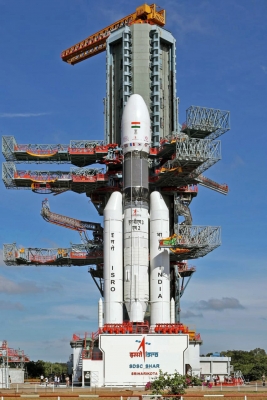
OneWeb pays about Rs 2,000 cr to India for launching 72 satellites
By Venkatachari Jagannathan Sriharikota (Andhra Pradesh), Oct 22 (IANS): The UK-based Network Access Associated Ltd (OneWeb) will be paying about Rs 2,000 crore to the Indian space agency to launch its 72 satellites, said a top group official. He also said OneWeb's merger with the French...



